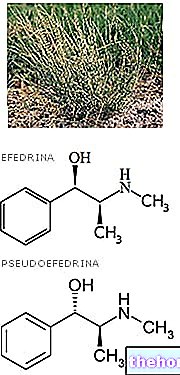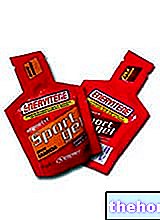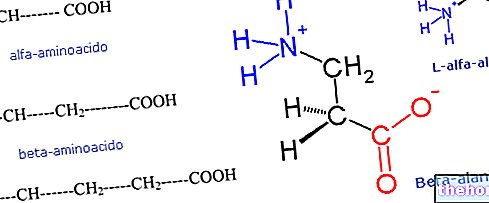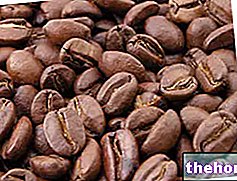Critical analysis of the Multicentrum® product for adults
- MULTICENTRUM COMPOSITION FOR ADULTS
- COMPARISON WITH RDA AND OTHER PRODUCTS
- IS THE MULTICENTRUM "USEFUL?
- WHY "HIRE IT
- WHY "DON'T TAKE IT
- WARNINGS AND CONTRAINDICATIONS
- DOES THE MULTICENTRUM GET FAT?
- HOW LONG TO TAKE IT?
- WHEN TO TAKE THE MULTICENTRUM?
- NATURAL ALTERNATIVES TO MULTICENTRUM
Multicentrum ingredients:
Dibasic calcium phosphate, Magnesium oxide, Thickeners: E460, E464, Vitamin C, Potassium Chloride, Gelatin, Stabilizer E1202. Nicotinamide, Vitamin E, Starch, Iron fumarate, D-calcium pantothenate, Sucrose, Zinc oxide, Manganese sulfate, Vitamin B6, Vitamin B1, Vitamin B2, Beta-carotene, Copper sulphate, Vitamin A, Emulsifiers: E570, E470, E433, Lutein, Modified starch, Lactose (from milk), Folate, Chromium chloride, Sodium molybdate, Potassium iodide, Anti-caking agent: E551, Sodium selenate, Biotin, Vitamin K, Vitamin D, Vitamin B12, Colors: E132, E171.
Multicentrum composition:
Each Multicentrum tablet contains the following nutrients:
Multicentrum for adults (1 tablet): Folic acid (200 mcg) - Pantothenic acid (7.5 mg) - Vitamin A (800 mg, 25% as Beta-carotene) - Biotin (62.5 mcg) - Vitamin B1 (1.4 mg) - Vitamin B2 (1.75 mg) - Vitamin B6 (2 mg) - Vitamin B12 (2.5 mcg) - Vitamin C (100 mg) - Vitamin D (5 mcg) - Vitamin E (15 mg) - Vitamin K ( 30 mcg) - Niacin (20 mg) - Calcium (162 mg) - Chromium (40 mcg) - Iron (5 mg) - Phosphorus (125 mg) - Iodine (100 mcg) - Magnesium (100 mg) - Manganese (2 mg ) - Molybdenum (50 mcg) - Copper (500 mcg) - Selenium (30 mcg) - Zinc (5 mg) - Lutein (500 mcg).
Energy value: 0.33 Kcal (1.39 Kj), Proteins 0.03 g - Carbohydrates 0.03 g, Carbohydrates 0.03 g, Fats 0.1 g.
* Recommended daily rations (RDA) according to the ministerial decree 18/3/09 which, by transposing directive 2008/100, establishes the new RDAs for vitamins and minerals.
* Multicentrum for adults (one tablet)
* Supradyn (one effervescent tablet)
* Be-total plus (one tablet)
Is the multicentrum useful?
Expressing an unquestionable judgment on the usefulness of multivitamin and multimineral supplements is really difficult.

In the following paragraphs we analyze the main reasons that push doctors and consumers to support or deny the efficacy and safety of these supplements.
In the literature there are numerous studies that warn of the general and worrying collapse of the nutritional power of foods. The simple comparison of the first nutritional tables with the current ones, in fact, shows a significant reduction in the dietary intake of essential nutritional factors, such as vitamins and minerals present in the multicentrum. There are numerous reasons behind the phenomenon. First of all, the progressive impoverishment of the land , caused by the advent of chemistry, intensive cultivation, genetic selection and the intense exploitation of underground resources, with lack of crop rotation. All these factors negatively affect not only the nutritional power of plant foods, but also that of meat obtained from the animals that derive nourishment from them. As if that were not enough, the same animals live in conditions of overcrowding, condemned to immobility, physical suffering and obesity, superpumped with feed based on high-protein flours rather than left free to graze , and genetically selected to maximize profits.
To all this are added the transformations undergone by food during the agri-food chain, understood as that complex of production structures that contribute to the production, distribution, marketing and supply of an agri-food product. The refining and rectification processes, long storage times, inadequate transport and storage conditions, the need to harvest still immature fruit and vegetables, the demand for products out of their natural season and, last but not least, pollution, these are just some of the factors that contribute to impoverishing the food that arrives on our tables. To all this is added the excessive use of additives, which allow to save on the quality and quantity of the basic food.
Depending on the sources consulted, the decline in the nutritional values of current food products compared to those of 20-30 years ago varies from 15 to over 50%. Therefore, for the same calories, far fewer vitamins and mineral salts arrive on our tables than in the past, elements that would justify a regular and constant use of the multicentrum.
Finally, incorrect habits are increasingly widespread which increase the need for vitamins and minerals, feeding chronic subclinical deficiencies, that is, with unidentifiable symptoms; among these factors we remember: stress, special diets, sports, alcohol abuse, excessive use of laxatives and some particular drugs - such as aspirin, antibiotics or anti-conventional pills - food intolerances, stress, smoking and excessive hygiene.
SOME POTENTIAL INDICATIONS OF THE MULTICENTRUM: malabsorption syndromes (celiac disease, Crohn's disease, ulcerative colitis, gastrointestinal resections, atrophic gastritis, etc.), intense physical activity (high level agonism), pregnancy and lactation, anemic states due to iron deficiency, asthenia of unknown cause, not attributable to specific pathologies, diarrhea, use of antibiotics and digestive insufficiency.
MULTICENTRUM: contraindications "




























